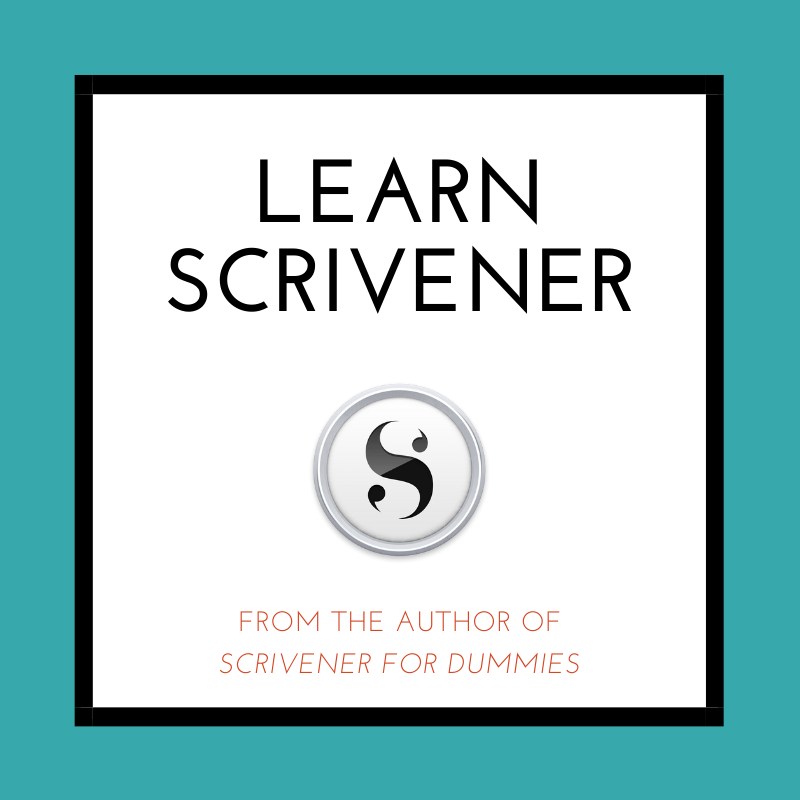Understanding Your Audience: The Key to Relevance
Blogging sounds easy enough, right? Just write about stuff and hit publish. But if you truly want to connect with an audience, grow your online presence, or even boost your business through a blog, there’s more to it than just throwing words on a page. You need engaging blog posts.
The critical first step is getting to grips with who is likely to read your blog. Are they young professionals, busy parents, or passionate hobbyists? Each group brings their own interests and needs to the table. To write content they care about, you’ve got to know what makes them tick.
I’m going to let you in on a little secret: data is your best friend here. Dive into your website analytics to see what content is resonating. If social media is your thing, check out which posts get the most engagement. Or, step into the world of surveys and ask your readers directly about their preferences.
Once you’ve gathered this intel, it’s time to use that knowledge. You’ll craft personas—semi-fictional characters that represent your ideal readers. This isn’t just a description of demographics; it’s about understanding their behavior, challenges, and what they’re looking to achieve when they land on your blog.
Remember, connecting with your audience on a deeper level sets the stage for a successful blog. Now, with your audience clearly in mind, you’re perfectly positioned to select topics that not only attract attention but also deepen the reader’s engagement with your content. That’s exactly what we’ll delve into in the next section.

Choosing Topics That Resonate: Decoding Interest
You’re probably wondering how to hit that sweet spot of choosing topics that spark interest. I’m going to show you how to be a topic detective. It’s not just about what you want to write; it’s also about what your readers want to read. Here’s how you do it.
Market and keyword research are your best pals for uncovering what’s hot and what’s not. Tools like Google Trends and Answer the Public can give you a snapshot of what people are curious about. Don’t worry too much about going after high-volume keywords only. Choose something that resonates with you, too, because passion shines through and engages readers.
Trends can be tempting to chase, but you need to put your own spin on them to stand out. If you want to grab attention, think about what you can offer that’s different. How can you add to the conversation? Always ask, ‘Why would someone read this on my blog versus somewhere else?’
Consider diving into forums, groups, or even the comment sections of similar blogs. You’ll learn about the real questions and challenges people face. This isn’t just a gold mine for content ideas; it’s a chance to truly connect and provide solutions through your writing.
Finding balance in your content is essential. You can admit it: not every post will be a viral hit, and that’s OK. Mix evergreen content that stays relevant over time with topical content that taps into current conversations. This strategy ensures a fresh yet constant appeal to your blog.
Now, as you segue into section 4, you’ll see how these topic choices will play an essential role in capturing initial interest through irresistible headlines. After all, a great topic deserves an equally great headline to get the notice it deserves.

Crafting Irresistible Headlines: The Importance of First Impressions
Blogging sounds easy enough, right? Just write about stuff and hit publish. But if you want your blog posts to be the guest of honor in the competitive party of online content, you’ll need a golden ticket, and that’s a potent headline. It’s the first handshake with your audience; the make-or-break moment. If your headline doesn’t snag attention, it doesn’t matter how good your content is – chances are, it won’t be read.
So, what makes a headline irresistible? It’s a concoction of curiosity, clarity, and a touch of creativity. Your headline should pinpoint the reader’s interest and promise them something: an answer, a story, a secret. It’s not just about being clickable; it’s about delivering on that click with quality content.

Here’s how you can begin to master this craft:
– Utilize proven headline formulas like ‘How to…’, ‘X Reasons Why…’, or ‘What You Need to Know About…’.
– Inject your headlines with active words and vivid language that inspire action or evoke emotion.
– Keep it snappy yet straightforward – aim for 60-70 characters, so it’s tweetable yet informative.
– Don’t shy away from numbers and lists; they set clear expectations for the reader.
Remember to keep SEO in mind, but don’t let it handcuff your creativity. Sure, keywords are the compass points that guide searchers to your content, but a title must first and foremost appeal to human interest, not just search engine algorithms.
Ultimately, you’ll want to validate your headline’s effectiveness. A/B testing via email campaigns or social media can offer valuable insights into what resonates with your audience. Jot down multiple options and test to see which headlines pull more traffic to your post. This isn’t just about seeking the highest click-through rate; it’s about understanding the psychology behind why certain headlines work.
Moving into the meat of the post, after you’ve tempted readers with a compelling headline, the next critical step is delivering content laden with expertise to keep the promise your headline made. That’s what we’re going to dig into next.

Writing with Substance: Injecting Expertise into Your Posts
Blogging sounds easy enough, right? Just write about stuff and hit publish. But if you truly want to connect with an audience, grow your online presence, or even boost your business through a blog, there’s more to it than just throwing words on a page. You need engaging blog posts.
That’s where writing with substance comes in. It’s about going beyond the surface and delivering content packed with value, insights, and expertise. Here’s how to ensure your blog posts are meaty enough to satisfy your readers’ hungry minds.
First, do your homework. Solid research forms the backbone of any post packed with substance. Whether it’s delving into the latest scientific studies, exploring case histories, or gathering statistics, your post should display a deep understanding of the topic. This isn’t just about looking knowledgeable; it’s about being a reliable source of information.
Your own experiences can also be a gold mine. If you’re writing about something you’ve personally encountered, don’t shy away from sharing your anecdotes. This personal touch not only adds credibility but also makes your content more relatable. When readers can see the person behind the words, trust naturally starts to build.
Accuracy is non-negotiable. Every claim, statistic, and piece of advice should be double-checked. There’s a simple reason for this: trust is hard to gain and easy to lose. Cite your sources, link to reputable research, and show your readers that you’re committed to providing trustworthy content. It’s the foundation upon which authority is built.
Finally, don’t forget to tap into the knowledge pool of experts. Interviews, quotes, and collaborative posts can lend significant weight to your argument. They also reflect well on you, positioning you as someone who values true expertise and wants to share it with your readers.

The Power of Storytelling: Connecting on a Personal Level
Storytelling isn’t new. It’s how human beings have connected and passed on knowledge for millennia. And guess what? It’s just as effective in blog posts today as it was around ancient firesides. By weaving a narrative into your blog, you’re doing more than sharing information; you’re engaging emotions and forging a connection.
So, how can you use storytelling to grip your readers? Start with a situation your audience can relate to. It could be a challenge you faced, a remarkable experience, or an interaction that left a lasting impression. By sharing these slices of life, you make your readers feel at home, ready to invest their time and attention into what comes next.
Here’s where transparency comes in. It’s about being open about your experiences and even your mistakes. When you’re vulnerable, it’s like you’re giving your reader a backstage pass to your world. That’s going to include the highs and lows, the wins, and the not-so-glorious moments. This realism nurtures trust and keeps your audience rooting for you.
Now, just as a good story has a climax, your blog post should build up to a pivotal point as well. This isn’t just about creating suspense—it’s about making the key message of your article unforgettable. Whether it’s a life lesson, a pro tip, or a call to action, it must resonate with your audience’s own narrative.
To wrap up, while your readers might come for advice or information, they’ll stay for the stories that illustrate them. In my opinion, a blog post enriched with personal stories is like a favorite novel that you can’t put down. It lingers, inspires, and, most importantly, it brings your readers back for more.
Enhancing Readability: Structuring Your Blog Post for Clarity
You’ve got the meat of your content down pat. Now, it’s time to discuss how to serve it up in a digestible way. Writing engaging content isn’t just about what you say; it’s also about how you say it. A blog post’s structure can make or break a reader’s experience. Let’s break down how to structure your post for maximum clarity and readability.
First up, don’t underestimate the power of subheadings. They’re not just there to make your post look pretty; they guide your readers through the piece, much like road signs help drivers navigate a journey. Use them to break your content into manageable chunks. It’s all about making things easier for your audience.
Bullet points and numbered lists are your allies. They turn a wall of text into a neatly organized display. This makes key points stand out while providing a pause for the eye, which is a relief to readers skimming for valuable tidbits.
Then there’s the role of visuals. Humans are visual creatures by nature. Images, videos, infographics, and even GIFs can bring your post to life, reinforcing your message while giving readers a break from continuous lines of text. Think of visuals as the spice that can really add sizzle to your steak.
Whitespace is not wasted space. It’s a powerful tool that can help combat reader fatigue. Use line breaks and spacing between paragraphs and elements to give your content room to breathe. Remember, white space is the resting phase in your content’s rhythm.
Lastly, Keep your tone conversational. You’re talking to your readers, not lecturing them. By imparting your message as if you’re having a chat over coffee, you make your content more relatable and easier to digest. Imagine your ideal reader sitting across from you and writing to that person.
Now, if you think the job ends once your post goes live, think again. Generating great content is just the beginning. The real magic happens when you engage with your readers and create a community around your blog. That’s what we’re diving into next.

Engaging with Your Readers: The Feedback Loop
Engaging with your audience isn’t just a one-off task; it’s an ongoing conversation. You’re going to find out about why this matters and how it strengthens your blog. This isn’t just about getting feedback; it’s also about building a community that trusts and values your content.
Start with the comments section. This is where interaction lives. I’m here to tell you not to ignore it. You can always adjust your approach down the road, but start by responding to comments, offering gratitude, and fueling discussions. Reader engagement is a powerful trust signal.
Now what about social shares? They are vital. When someone shares your post, they’re endorsing your content to their network. Provide clear and easy options for readers to share your content. But here’s another tip: interact with them on social media, too. Acknowledge their shares and create full-circle engagement.
This leads me to my next point: use feedback to refine your content. When including suggestions or answering questions, you personalize the experience. If you’re wondering about the value of personalized content, guess what? It’s significant. Remember, a blog post isn’t the final say; it’s part of an evolving dialogue with your readership.
I’ve noticed that the most successful bloggers are those who see their audience as collaborators. They understand that readers play a huge part in shaping the blog’s direction. So my question to you today is: how can you make your readers feel more involved?
In my opinion, taking the time to understand and acknowledge your readers’ contributions not only fosters loyalty but also gives you insights into what content will resonate in the future. Choose something that resonates with you, like a recurring reader’s spotlight, reader guest posts, or regular Q&A sessions, and watch your engagement levels soar.

Conclusion: Ever-Evolving Excellence in Blogging
You’ll discover that blogging isn’t just a publish-and-forget endeavor. It’s an ongoing journey of connecting, refining, and growing. The ‘secret sauce’ to writing blog posts that people actually want to read isn’t static; it’s an evolving mix of relevance, expertise, authority, and genuine engagement.
If you want your blog to thrive, choose topics that resonate with your audience and write with clarity and passion. Inject personality and experience into your storytelling, and never underestimate the importance of a catchy headline to draw readers in.
But don’t worry too much about nailing it on the first attempt. Your blog is a living entity, and each post is an opportunity to learn and enhance your approach. Use analytics to guide your strategy, but always let genuine interest and care for your readers lead the way.
I hope this guide has given you the insights and tools you need to craft compelling blog content. Remember, the most successful bloggers listen, adapt, and grow with their audience. So keep writing, keep engaging, and most importantly, keep learning. Your readers will thank you for it.
Kevin
I hope you found this blog post helpful. If you did, please share it with your friends and leave a comment below. And if you want to learn more about writing, check out my other blog posts on 3D printing, affiliate marketing, and writing. Thanks for reading! 😊
Kevin
Make them laugh, make them think, but above all, make them feel.
As a wordsmith seeking to enhance your writing prowess, you’ll find many remarkable writing tools and apps at your disposal. Let’s explore some of the best options:
- Scrivener: A beloved companion for authors, Scrivener offers a treasure trove of features. It helps you track plot threads, store character notes, structure your work, and—most importantly—get serious writing done. While it’s not free, the investment is well worth it for serious writers.
- Ulysses: If distraction-free writing is your goal, Ulysses is your muse. Its minimalist interface allows you to focus solely on your words. Plus, it syncs seamlessly across devices, ensuring your creativity flows wherever you are.
- iA Writer: Ideal for online writing (think Medium or WordPress), iA Writer combines simplicity with elegance. Its clean design encourages a flow state, making it a favorite among bloggers and content creators2.
- Plottr: For those who thrive on outlining, Plottr is a gem. It helps you map out your novel, organize scenes, and keep your plot threads in check. Whether you’re a pantser or a plotter, Plottr has your back.
- Reedsy Book Editor: If you’re working on a book, Reedsy’s online editor is a fantastic choice. It’s free, collaborative, and offers a straightforward interface for drafting and editing your masterpiece.
- yWriter: Scene-based writers rejoice! yWriter lets you organize your novel into scenes, track characters, and maintain a bird’s-eye view of your work. It’s a powerful tool for structuring your narrative.
Remember, the best writing app is the one that aligns with your unique needs and writing style. Whether you’re crafting screenplays, novels, or blog posts, these tools will be your trusty companions on your literary journey. Happy writing! 📝✨



